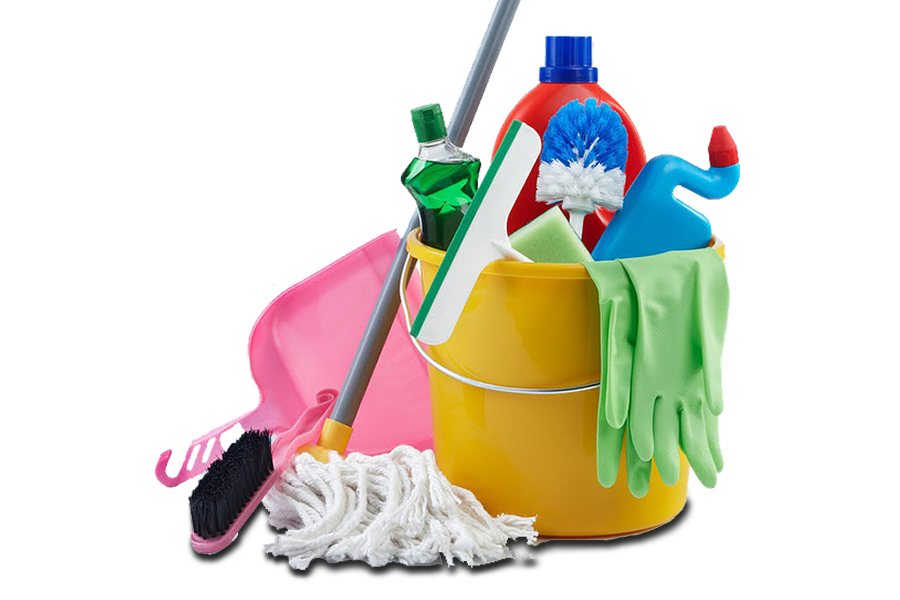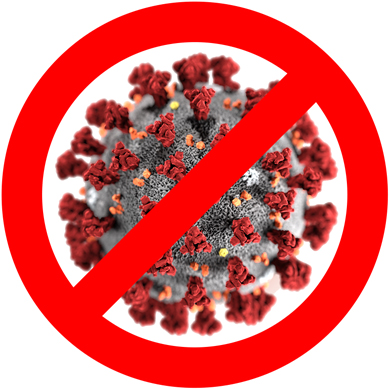As the number of cases of the current COVID-19 pandemic increases, more people are becoming alert about their surroundings. As a result, many are taking precautionary measures even if they are staying inside their homes.
Like other respiratory viruses, COVID-19 spreads through tiny droplets from the nose and mouth of an infected person as they cough. A person can produce up to 3,000 droplets (between 1-5 micrometers in size) just from one cough. The virus carried by these droplets may remain airborne for up to three hours when coughed in the air. In spaces with unfiltered air conditioning systems, the virus may live for hours as aerosols settle on surfaces faster in disturbed air.
Speaking of surfaces, COVID-19 can survive in-home surfaces for days, even weeks. The virus thrives for as long as nine days in surfaces made from metal and glass. It develops for a shorter time in plastic and stainless-steel surfaces, up to 2-3 days, while it lasts for 24 hours in cardboard. The virus might thrive longer on door handles, plastic-coated or laminated worktops, and other hard surfaces. However, studies also show that copper surfaces have the ability to kill the virus within 4 hours.
Regardless of the material of your home’s surface, it is vital for you to continue regular housecleaning and sanitizing practices.
The Difference in Cleansing and Disinfecting
According to the Centers for Disease Control and Prevention (CDC) and the World Health Organization (WHO), regularly washing your hands and sanitizing home surfaces can be the main way of preventing COVID-19 from spreading.
Remember, when sanitizing your home, cleaning and disinfecting are both important. Cleaning removes germs, dirt, and impurities from surfaces. It doesn’t necessarily kill the germs, but by removing them, it lowers the risk of infection. Disinfecting, on the other hand, kills the remaining germs left on clean surfaces.
If the surface is visibly dirty, you have to clean it first. Coronavirus is an enveloped virus, which means that there is an outer layer enveloping the host cell. Use a detergent when cleaning to deactivate the virus, making it easier to kill off. After doing so, move on to disinfecting. Effective antiviral disinfectants contain hypochlorite, the main active ingredient in bleach, or 0.5% activated hydrogen peroxide.
Cleaning products such as Sterile X suit your home sanitation needs. Sterile X contains 70% alcohol, which is the recommended percentage to kill bacteria and viruses such as COVID-19 or coronavirus. It also has quats, or quaternary ammonium cations, a chemical compound commonly used as antimicrobials and disinfectants. Quats are believed to deactivate enveloped viruses, such as COVID-19. Sterile X kills 99.9% of harmful viruses and bacteria within six hours. It can be used for table top surfaces, shoes, car interiors, phones, and even bank notes.
Also, aside from common viral infected areas like kitchen counters, toilets, and other easily visible surfaces, do not forget to thoroughly clean high touch surfaces. These include door knobs, handles, light switches, keys, and other items that you usually touch. These are areas that can be easily overlooked but may be home to germs and bacteria.

House Cleaning Guideline
Now you know a thing or two about disinfecting your home, it is time to get on with the process itself. Here are some of the guidelines for cleaning your house:
- Wear gloves and a mask for cleaning.
- Prepare the bleach solution/disinfectant based on manufacturer’s instructions.
- Soak the cleaning cloth with the bleach solution/disinfectant, then use it to wipe the surfaces. Use a sweeping motion when doing so. Also, let the surface soak on the disinfectant for at least 10 second for it to work. For areas like toilets, make sure to use a separate cleaning cloth or tool.
- Put all the used cloth/rags and wastes in double-line plastic/trash bags for disposal.
- Disinfect buckets used by soaking it in bleach for at least 10 minutes.
- After the cleaning process, remove the gloves and mask. Wash you immediately after. As much as possible, use disposable gloves and masks. If you are using reusable materials, make sure not to use them for sanitising purposes only.
- Shower and change clothes after cleaning.
- Air/ventilate the house.
During these times, taking extra caution will not harm anyone. Always be vigilant about you and your family’s health condition. For now, avoid sharing household items and keep shared spaces sanitized and well-ventilated. Practice disinfecting your house daily and continue to have good hygiene, including washing your hands.
Read up on current updates regarding the virus and additional tips on how to prevent it from spreading. Inform yourself, so when the time comes, you will be able to create smart decisions. Once one of you shows symptoms of COVID-19, seek medical help immediately. Do not panic. Stay safe and keep an optimistic outlook. By exerting extra effort, you can prevent this virus from affecting you and your family.


